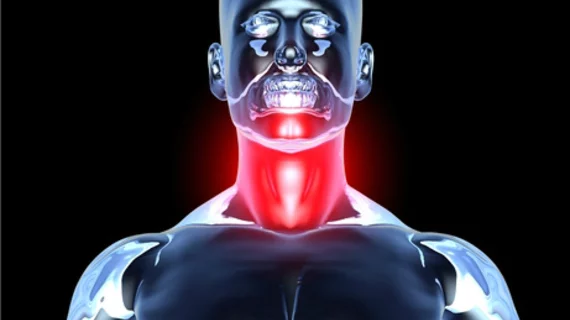Four-dimensional (4D) CT offers improved preoperative localization in patients with primary hyperparathyroidism compared to sestamibi SPECT/CT, according to a study of 400 patients published in Radiology.
The research team, led by Randy Yeh, MD, of New York-Presbyterian Hospital/Columbia University Medical Center in New York, also found combining 4D CT and technetium-99m sestamibi SPECT/CT did not improve diagnostic performance compared to 4D CT alone.
Invasive parathyroidectomy has been widely adopted over the past two decades, but imaging guiding its success, which is highly dependent on accurate preoperative localization of a single parathyroid adenoma, remains highly subjective.
“With a variety of imaging-based localization modalities available and different acquisition protocols within a given modality, to our knowledge there is no current consensus regarding the optimal localization procedure and imaging protocol,” the authors wrote. “The choice often depends on regional imaging capabilities, radiologist expertise, and surgeon preference.”
To determine the diagnostic accuracy of parathyroid 4D CT and sestamibi SPECT/CT, the authors evaluated 400 patients (319 women, mean age of 61 years) who underwent sestamibi SPECT/CT and 4D CT at a single institution from February 2013 to May 2016. All patients underwent parathyroidectomy within six months of imaging.
Overall, 4D CT combined with sestamibi SPECT/CT and 4D CT alone achieved similar diagnostic accuracies with an area under the curve difference of .01. However, combined SPECT and 4D CT “is not justified on the basis of our data,” the team wrote, with one reason being the jump in effective radiation dose. Such doses for sestamibi SPECT/CT, 4D CT and combined imaging are 10.6 mSv, 22 mSv and 28 mSv, respectively.
Both 4D CT with sestamibi SPECT/CT and 4D CT alone outperformed sestamibi SPECT/CT, according to the results. Four-dimensional CT achieved a 79 percent sensitivity compared to sestamibi SPECT/CT (sensitivity of 58 percent). In a subset analysis, 4D CT was more sensitive in patients with single-gland disease and those with multigland disease.
“To our knowledge, our study of 400 patients with a lesion-based analysis of 1600 glands is the largest to directly compare the two modalities and to evaluate 4D CT in preoperative localization,” Ye et al. wrote.
While Ye and colleagues established a clear benefit of 4D CT, in a related editorial, Partha Sinha, MD, from the University at Buffalo in New York, and colleagues maintained other available modalities, such as parathyroid scintigraphy, still have an important place in imaging patients with hyperparathyroidism.
“The postoperative neck can be particularly difficult to assess because of altered anatomic landmarks,” the authors wrote. “Four-dimensional CT may not be an available option in patients with impaired renal function because of the need for intravascular iodinated contrast media.”
“A clear definition of the role of parathyroid scintigraphy should address certain clinical scenarios, such as the postoperative neck, and should include investigation of dual-phase and dual-radiopharmaceutical SPECT/CT compared with other competing and complementary modalities.”

